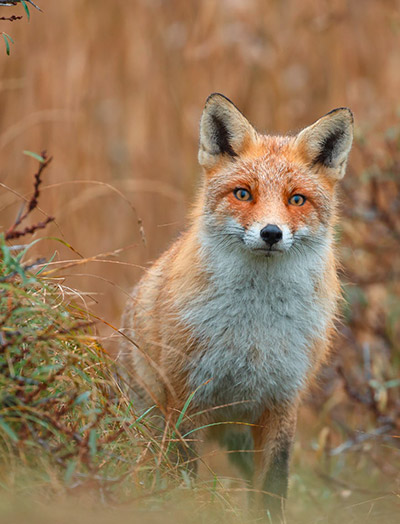
Foxes also require a lot of food while rearing their young from around April/May. Domestic poultry and wild birds kept in aviaries are desirable and easy prey during this time.
Omnivorous badgers have a wide range of food including eggs, young birds and grain in summer, and maize once ripe on the cob. They often bring their clans to fall on crops.
Electric fences can be used to ward off predators. This includes a powerful
12 V AKO fence device with a fence voltage of around 4000 to 5000 volts and an impulse energy of 1 to 5 Joules. Optimum earthing must be ensured.
First, aviaries should be surrounded by a net at least two metres high (mesh size max. 5 cm). On the upper end, the net must project outwards like the letter Y (protection against climbing) and be laid around 15 cm flat on the ground towards the outside (undermining protection).
An
AKO electric fence is then set up around the entire aviary, about 15 to 20 cm in front of the aviary net. This means no predators can linger between the aviary and electric fence.